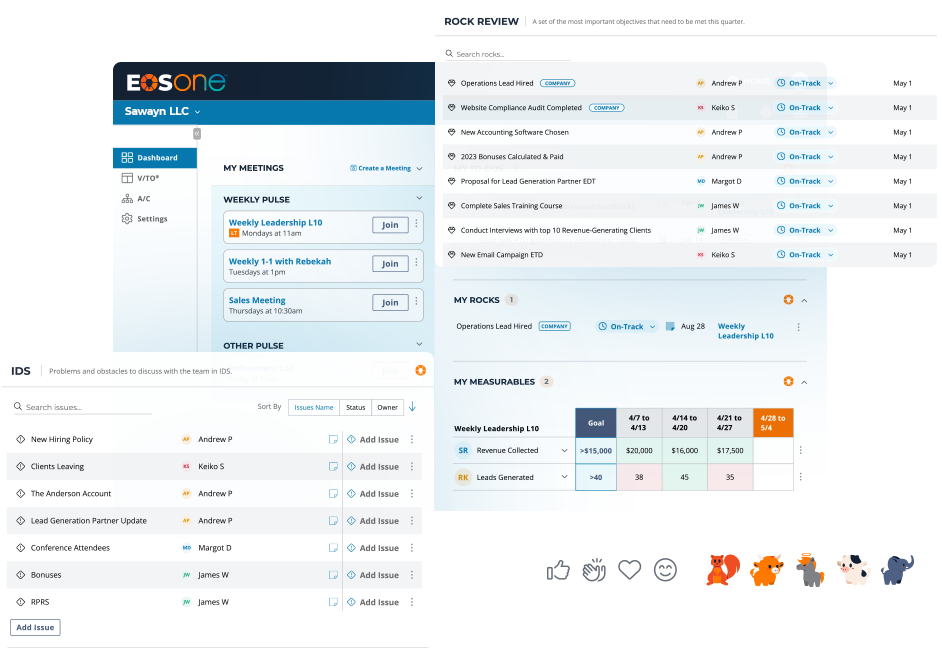One of the first things we do when implementing EOS in a company is to begin the process of determining the right leadership structure for the organization using the Accountability Chart. This is usually relatively easy to do for your senior leadership team, but some of your team may have difficulty when it comes to creating a chart for their own department.
Here are few tips and best practices for working through this process with your team.
1. Start by laying out the process for your team members and setting a due date for when they must provide a first draft for their department.
Some will present you with the right information in an organized manner. Others might not fully grasp the concept right away and will simply provide you with a list of names. You may need to sit with them to help them diagram their department and spell out the five roles for each seat.
Either way, realize that this is a process and there will be at least a few revisions before you achieve the right chart. It’s better to get something on paper and let folks comment on what needs to change than to try to make it perfect the first time.
2. Get real and be prepared to make hard decisions.
The ideal structure you would design for your business in a perfect world may be vastly different from the realities that are before you. You may have someone who is really good at something that may not be what their position requires. You may have one individual who doesn’t get along with the person who should be his boss and reports to someone else. You may have an employee who is a great, dependable person, but whose skills aren’t really suited to any of the seats on your chart. If your company is going to move forward, situations like these cannot continue.
Designing a structure that is best for the long-term welfare of the company is more important to achieving your vision than avoiding hurt feelings or personality conflicts. You can’t build your Accountability Chart with the idea that you must have a seat for everyone who is currently on your team. Build a structure based on how your business should work and deal with the other issues separately.
3. It’s OK for the same name to appear in multiple seats.
This happens often! If a person is performing the duties of a particular seat, their name needs to be on that seat. It is better to have their name in multiple positions than to change their position description to fit the combination of responsibilities they have now. The business will grow to a point where they can no longer perform the duties of multiple positions. When you reach that milestone, the person filling multiple seats can assume just one of them and you can hire someone else to fill the others. Ask your EOS Implementer to facilitate a discussion on how to work that out.
4. Collaborate on your drafts with your team and make revisions until you get it right.
As the Integrator, you should drive the process. Put it on your issues list to discuss your team’s progress every week in the IDS portion of your Level 10 Meeting. Consider scheduling offline meetings outside of the Level 10 if necessary.
You will go through multiple versions (one client had 18!) before it is settled and ready for rollout. Continue to talk it out in back-and-forth discussions until you arrive at the best structure. You’ll go over the chart with your EOS Implementer during your Vision Building Days sessions, and he or she can help you resolve any details you might need assistance with. But keep the back-and-forth, discussing and revising going until you hear the sweet sound of agreement around the table.
5. Live what you’ve designed.
Once it’s done, look at the final Accountability Chart as a team and ponder what it means. It may look very different from the way your company is currently operating. If so, there will be an adjustment period as everyone gets used to a new way of thinking about the company and their role in it. It may feel strange for a while, but if you stick with it, you’ll all reach a point where you wonder how you ever operated any other way.
Note: This article was co-authored by Kenneth C. DeWitt. Mr DeWitt is the founder of DeWitt LLC, an Alabama-based business strategy execution and coaching firm.

